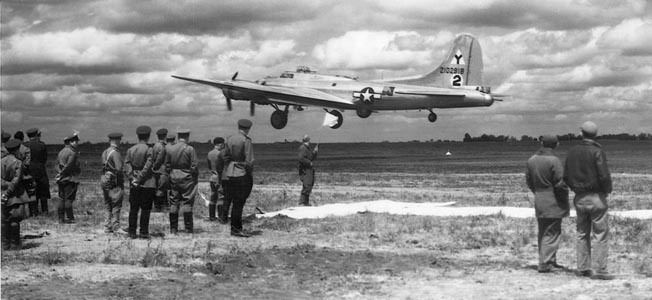 | ||
Period June 1944 – September 1944 Result American-Soviet strategic failure Similar World War II, Operation Titanic, Strategic bombing during W, Operation Tidal Wave, Combined Bomber Offensive | ||
Operation Frantic was a series of seven shuttle bombing operations during World War II conducted by American aircraft based in Great Britain and Southern Italy which then landed at three Soviet airfields in Ukraine. The operation began in June, 1944 and ended in September.
Contents
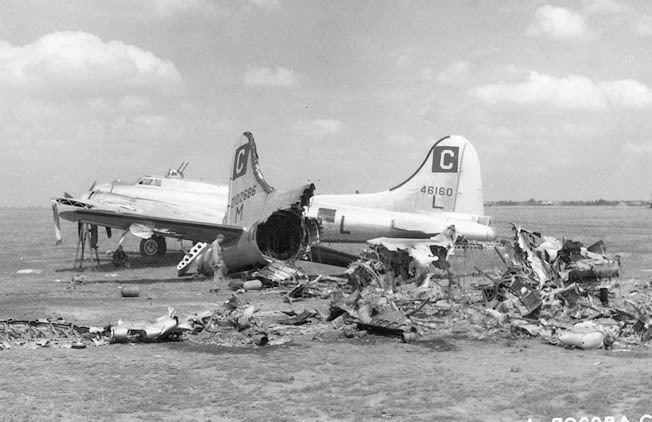
Overview

American plans to use air bases in the USSR began as United States Army Air Forces (USAAF) staff studies soon after the German invasion on 22 June 1941. After the Japanese attack on the United States on 7 December, the concept was expanded to hit the Japanese Home Islands from Siberia. However, Soviet air cooperation was negligible through 1942, and it was not until the Foreign Ministers' conference (Moscow Conference) in Moscow in October 1943 that the American delegation raised the issue formally with Foreign Commissar Vyacheslav Molotov.
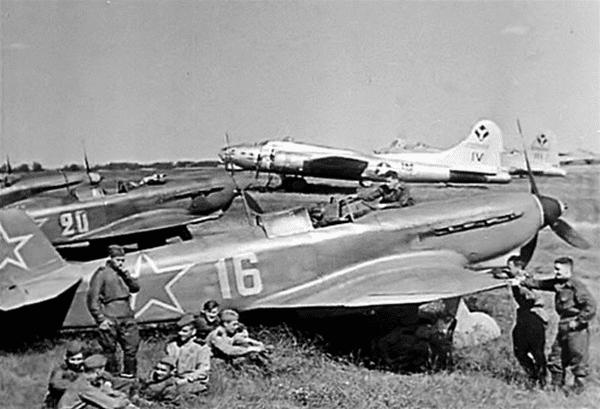
At the Tehran Conference in late November 1943, President Franklin D. Roosevelt personally proposed the use of Soviet bases by American aircraft to Marshal Joseph Stalin. In this he was assisted by a personal appeal from his son, Colonel Elliott Roosevelt, also in attendance, who requested the bases for use of his reconnaissance aircraft then operating from Italy.
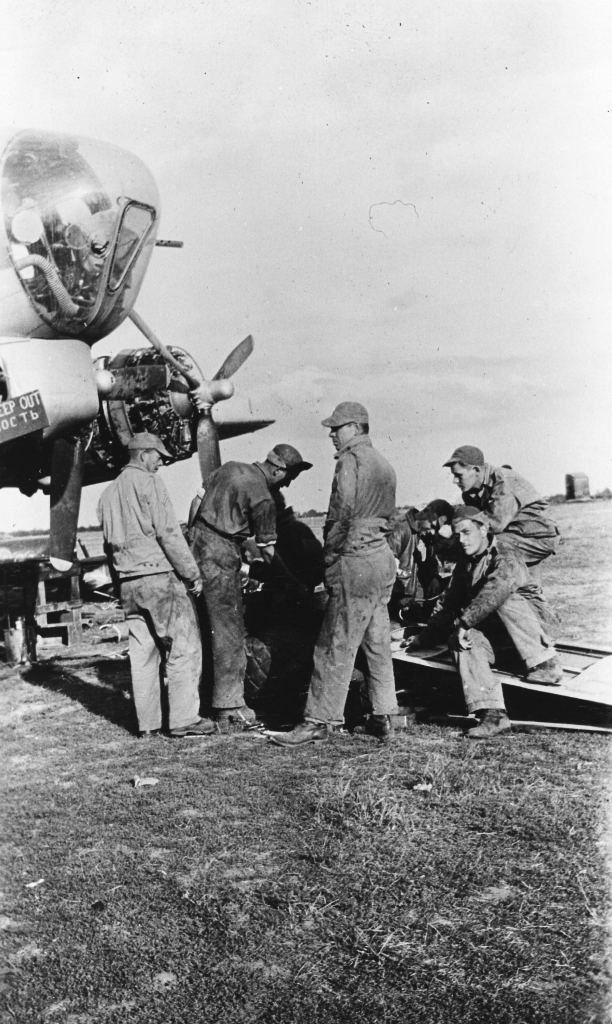
The position papers given to Stalin emphasized both reconnaissance and bombardment operations, and Stalin agreed to proceed with the plan "in principle." American heavy bombers stationed in Britain and Italy would fly strike missions deep into the heart of Nazi territory or occupied Eastern Europe. Afterwards, they would land at American air bases in newly recovered Soviet territory, re-arm and re-fuel, and then attack other targets on their return flights.
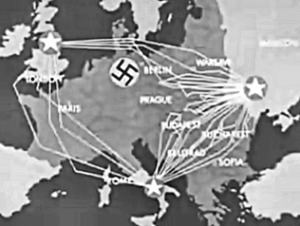
Operation Frantic, originally known as Operation Baseball, was intended to permanently establish three heavy bomber groups in Soviet territory, but only a small contingent, about 1,300 men, was eventually detached to the American bases in the USSR.
During the four months of major operations, 24 targets in German-held territory, some never before within effective range of the American strategic bomber forces, were attacked.
While the shuttle bombing technique complicated German air defenses, in practice most targets were already coming in reach of US bomber streams from Italy and England. Soviet vetoing of some targets prevented more effective use of the bases.
The operations were reduced and finally discontinued due to 1) a catastrophic German air attack on the bases in June, 2) Soviet hostility and non-cooperation that began in August, and 3) the inability of the Americans to receive permission to use the bases for support of the Warsaw Uprising, which soured relations between the two countries.
The main operational difficulty encountered by the US forces was inadequate force protection by the Soviets. The Soviets refused US requests to introduce adequate radar-guided artillery and night fighter support, and US aircraft were frequently fired upon by Soviet forces.
The three bases reached their peak in July and August 1944, with a firmly limited complement of 1300 US officers and men. By October, operations were put on a "skeleton crew" basis, with a winter contingent at Poltava only of about 300. Americans remained there until evacuation after VE-day.
Operation Frantic has greater historical importance for the development of Soviet-American relations than for its effect on Germany's war effort. Starting out with high hopes, it eventually set a discordant note that foreshadowed the Cold War.
Objectives
The ability to hit distant German targets was not the only, or even the primary, American objective for Operation Frantic. The political and military leadership wanted also to 1) set a precedent and practical basis for later bombing of Japan from Siberia, after the USSR opened the second front in the Pacific; 2) provide a model for developing trust and cooperation between the two powers, deemed essential for winning the approaching peace and establishing amicable post-war relations; and 3) develop close cooperation and exchanges in ancillary domains, including telecommunications and meteorology, air reconnaissance and air transport networks.
After approval was given by Moscow in February 1944, a rapid buildup followed. Staff exchanges were made; the first "echelons" of American personnel began to arrive; and a US delegation flew to Moscow in an operational B-17, which was used to demonstrate American bombing tactics to the Russians. A USAAF Eastern Command (General Alfred Kessler) was established at Poltava, operating in parallel with the new American Military Mission to Moscow (General John R. Deane).
When a high-level US delegation led by United States Strategic Air Forces (USSTAF) deputy chief of staff for operations, General Frederick Anderson (accompanied by Colonel Roosevelt), visited Moscow and the bases in May 1944, conditions were such that the go-ahead for actual operations could be given. At the same time, Anderson let his side know that the ultimate goal was the establishment of a numbered American air force in the USSR and a switch to Siberian operations. For diplomatic reasons, this could not be revealed to the Russians. As it was, the Americans had to make do with a much smaller presence in the Soviet Union than originally contemplated.
Frantic also tied in with other US initiatives. At Teheran, General Henry Arnold (chief of the Air Forces) offered Stalin 300–400 B-24 bombers, but noted that they would require a large Soviet training program in the United States. Stalin did not take this offer; instead, American bombers making safety landings in Siberia were kept and copied by Soviet factories.
Britain did not share some of the US objectives, and Prime Minister Winston Churchill believed the operation was not worthwhile. The Royal Air Force did not participate in Frantic.
Soviet objectives in agreeing to the operation cannot be determined with certainty. Unlike the Americans, the USSR had no doctrine or "theology" of victory through aerial bombardment, and had only a rudimentary long-range air force. Furthermore, when the survival of the USSR was in doubt, Marshal Stalin refused offers of air support, demanding instead maximum lend-lease deliveries. By the time Stalin finally agreed to activate the plan, in a meeting with US ambassador W. Averell Harriman on 2 February 1944, Soviet victory was assured. Indications are that Stalin wished to obtain all possible information about superior American technology, and assigned officers with the stated objectives of learning as much as they could about US equipment and concepts of operation. For example, the USSR demanded and obtained the secret Norden bombsight, and also obtained wide photographic coverage of Europe from American aircraft. However, this objective cut both ways, for the USAAF also learned of the extreme vulnerability of the USSR to air attack, and of the primitive technical and infrastructure conditions prevailing on the Soviet side.
Measured against its objectives, after brief euphoria Frantic developed into a costly and resounding failure that included one of the worst losses ever suffered by an American air force. Instead of cementing the alliance, it exposed its fundamental weaknesses and ended in great American bitterness.However, worthwhile operations against the Axis were carried out, and both sides learned much about the other.
Airfields
After meeting with Stalin on 2 February 1944, Harriman radioed back that "Stalin approves project limited to 200 bombers and six airfields." In the end only three bases were set up. In haste, the United States Strategic Air Forces in Europe established a headquarters detachment at Poltava Airfield, in Poltava region in the Ukrainian SSR in late April, 1944. Poltava was designated as USAAF Station 559 for security purposes and was thus referred to in all messages and written correspondence. Poltava was one of three Ukrainian installations operated by Headquarters, Eastern Command USAAF. The others were Pyriatyn Airfield (AAF-560) and Myrhorod Airfield (AAF-561). All three bases were situated along the Kharkov-Kiev railway and were already far behind the front. Poltava and Mirgorod were to be used by heavy bombers (B-24 Liberators, B-17 Flying Fortresses), while Piriatyn would be used for long-range escort fighters (P-51 Mustangs, P-38 Lightnings).
The bases were farther away than the USAAF wanted, and despite the best efforts were barely adequate for heavy bombers. Soviet infrastructure was not up to Western standards; the spring season turned everything into a sea of mud; and the retreating Germans had destroyed whatever they could. At Poltava, the Germans left behind a large headquarters building, but it was booby-trapped with a radio-controlled bomb that was, however, discovered in time. Also, the American officers found themselves dealing with an unfriendly and suspicious Soviet bureaucracy. In general, US officers agreed that the Red Air Force was cooperative and eager to assist, but the political structure was obstructionist and a source of interminable delays and problems. After August–September, the Soviet attitude became universally hostile, and by 1945 the small American detachments left in great bitterness. Winston Churchill had not been very enthusiastic about Frantic, believing that it was placing a lot more trust on Stalin than was wise, and events seemed to bear him out.
Heavy equipment and bulky supplies went by sea to the ports of Murmansk and Archangelsk in the Arctic, and then by train to the airfields in the Ukraine. Additional supplies and key personnel flew in on Air Transport Command planes from the ATC base at Mehrabad Airport, Iran. As there was no trans-Caucasian railway, additional shipping went across the Caspian to Baku. The logistical demands were enormous since almost everything had to be brought from the United States, even the high-octane aviation fuel and the steel-plank runways. Delicate negotiations finally fixed a total of 42 round-trip ATC missions to make the bases operational for the AAF, and allowed an additional rate of two weekly support missions to sustain the US contingent. The issue of flight communications eventually ended with a compromise, allowing US crews to carry out navigation and radio duties with a Soviet observer resident at all related communications centers. In support of Operation Frantic, ATC delivered some 450 personnel and thirty-six thousand pounds of cargo by June 1944.
Known units
Operations
A photographic reconnaissance detachment with a handful of F-5 Lightnings was sent to operate local flights from Poltava in late May, and a "triangular trade" in reconnaissance operations using Italy, Ukraine, and England preceded the bombing runs and also ran concurrently with them over the summer. These flights were conducted by units of the 325th Reconnaissance Wing, commanded by Colonel Elliott Roosevelt.
After much preparation at the three Ukrainian airfields by advance elements of Headquarters, Eastern Command USAAF and Air Transport Command, the first shuttle mission ("Frantic-Joe") was conducted by Fifteenth Air Force B-17 Flying Fortresses and their P-51 Mustang fighter escorts taking off from airfields around Foggia, Italy, raiding the railroad marshalling yards at Debrecen, Hungary, and then flying on to the Ukraine.
After the first shuttle mission, the consensus was that operations had been highly successful, and a joint atmosphere of celebration and high spirits reigned at Poltava. The second shuttle raid assigned Eighth Air Force B-17s to attack synthetic oil facilities near Berlin on the way to the Ukraine.
21 June 1944What was unknown at the time is that after the raid on Ruhland, the attacking B-17s were being shadowed from a distance by a Luftwaffe Heinkel He-111 bomber, which identified the Ukrainian airfields where they landed. Other sources indicate that the Germans were already aware of the locations and had assembled a strike force at Minsk in anticipation.
On the night of 21 June, the Combat Wing of B-17s which earlier landed at Poltava sustained severe losses in a German air attack. Hungarian planes also participated in the attack. Personnel were alerted at approximately 2330 hours when it was announced that German bombers had crossed the front lines in the general direction of Poltava. At 0030 hours, Pathfinder aircraft released flares directly above the airfield and ten minutes later the first bombs were dropped. For almost two hours, an estimated 75 Luftwaffe bombers attacked the base, exhibiting a very high degree of accuracy. Nearly all bombs were dropped in the dispersal area of the landing ground where only B-17s were parked, indicating without question that the B-17s constituted the specific objective of the raiders.
Of the 73 B-17s which had landed at Poltava, 47 were destroyed and most of the remainder severely damaged. One American B-17 copilot, Joseph Lukacek, was killed. His captain, Raymond Estele, was severely wounded and died later; several other men suffered minor injuries. The stores of fuel and ammunition brought so laboriously from the United States were also destroyed. Three days after the attack, only nine of the 73 aircraft at Poltava were operational. The truck-mounted 50-caliber machine guns that the Soviet high command insisted would be adequate had no effect on the Luftwaffe, as no aircraft were shot down or disabled. Also, Russian and American fighter aircraft were not allowed to take off (by Soviet high-command) to engage the Luftwaffe during this attack; the reason for this is unclear.
American personnel losses were light due to adequate warning and the network of slit trenches distant from the aircraft parking area. Russian losses were much higher since work crews were ordered to fight fires and disable anti-personnel bombs while the raid was ongoing. Butterfly bombs continued to explode on the field for many weeks thereafter. Red Air Force losses included 15 Yak-9s, 6 Yak-7s, three trainers, a Hawker Hurricane, and a VIP DC-3. Soviet anti-aircraft fire was intense but random, and perversely served to outline the field for the German aircraft. There are conflicting reports about whether Soviet aircraft engaged the enemy, but since there was no radar intercept capability, even American fighters would have been ineffective.
The well-planned German attack was led by Oberstleutnant Wilhelm Antrup of KG 55 and carried out by He-111Hs and Ju-88s of KG 4, KG 53, KG 55, and KG 27 operating from bases at Minsk. The operation was nicknamed Zaunkoenig. After the He-111s left, the Ju-88s strafed the field at low altitude. He-177s from Night Reconnaissance Squadrons performed target reconnaissance, pathfinder duties and bomb damage assessment. There were no German losses.
22 June 194426 June 19442 July 19443 July 19445 July 1944After the Poltava disaster, the USAAF wanted to move the P-61 Black Widow-equipped 427th Night Fighter Squadron to Poltava to provide radar-enabled night air defense over the fields. However, the Soviets vetoed this plan, insisting that air defense was their responsibility. The P-61s were diverted to Italy. The shuttle bombing missions were not abandoned for the moment, but they were suspended until the mess on the ground could be cleaned up and the defenses of the air bases improved. Realizing that the Soviets could not adequately protect the heavy bombers from night raids, the Americans abandoned plans to permanently station three heavy bomber groups on Soviet airfields.
Because of the loss of fuel and the inability to protect the force, the next Frantic missions were composed of long-range fighters.
To keep the project alive, Fifteenth Air Force next shuttled P-38 and P-51 fighters to the Soviet Union in late July.
22 July 194425 July 194426 July 1944After balancing losses and battle damage against the value of the targets, US military leaders at the Soviet bases discontinue the fighter-bomber operations.
During this period, the United States at the highest level urgently requested the use of the Soviet bases for air support and supply of the ongoing Polish Home Army uprising in Warsaw. However, until the Poles had already been substantially crushed, Stalin refused all assistance and vetoed these missions. This caused a crisis in Soviet-American relations and changed US perceptions of Soviet war aims among both military officers and diplomats.
Summary
The attack on the Szolnok rail yards was the end of major Frantic operations, as the original targets had been taken by the rapidly advancing Soviet offensive. After the issues over Polish resupply, Foreign Commissar Molotov put the Americans on notice that they were no longer needed, and a very hostile climate, including orchestrated episodes of violence and theft, ensued at the bases. The USAAF, citing logistical problems and becoming weary of growing Soviet intransigence, announced a suspension of Frantic shuttle missions. Also, by this time air bases in the Marianas became available to the Americans, and there was no longer a perceived need for bases in the Russian Far East. The US and Soviet advances by the spring of 1945 ended the need for shuttle missions and the ATC flew out the last US contingent of personnel from its headquarters at Poltava in June 1945.
Major problems were associated with the failure of air defense, but also with the eagerness with which Soviet fighters and artillery targeted American aircraft. Several American aircraft were downed, but the crews survived. From the Soviet perspective this was caused by the inability of US pilots to stick to the strictly limited corridors, altitudes, and time windows. On several occasions US aircraft became dispersed all over the region, which severely complicated Soviet efforts to control and track all foreigners. Soviet officers who had been too helpful to the Americans fell in disfavor, and one, Chief Air Marshal Alexander Novikov, who had received the US Legion of Merit, was tortured and jailed after the war. The problem of Soviet attacks on all aircraft in sight was deemed so serious that when President Roosevelt flew to Yalta in February 1945, the Americans insisted on placing observers at all nearby anti-aircraft sites.
Frantic was peripheral to the air war against Germany because most targets could have been reached from Italy. The Ukrainian bases were not used for two purposes for which they could have been decisive: air supply of the Polish Home Army and interruption of extermination camp operations at Auschwitz and other locations. Because US-Soviet collaboration was perceived by the Americans to be entirely a one-way street, it caused bitterness and suspicion, thus influencing a generation of USAF officers.
In addition, the Soviets learned of their own vulnerability to air attack and the enormous US technological advantage. The USAAF obtained insight into Soviet operations, and despite strict limitations obtained some additional photographic coverage which would become much in demand later.
Operation Frantic demonstrated the flexibility and reach of American logistics operating under trying conditions. It also demonstrated the political role of airlift logistics in terms of operational support that would have been impossible by conventional ground-based means. However, Frantic had not been a good use of Allied resources. The Germans judged it to be a propaganda exercise to impress the Soviets, but all it really accomplished was to make the strains in the Allied alliance more obvious.
